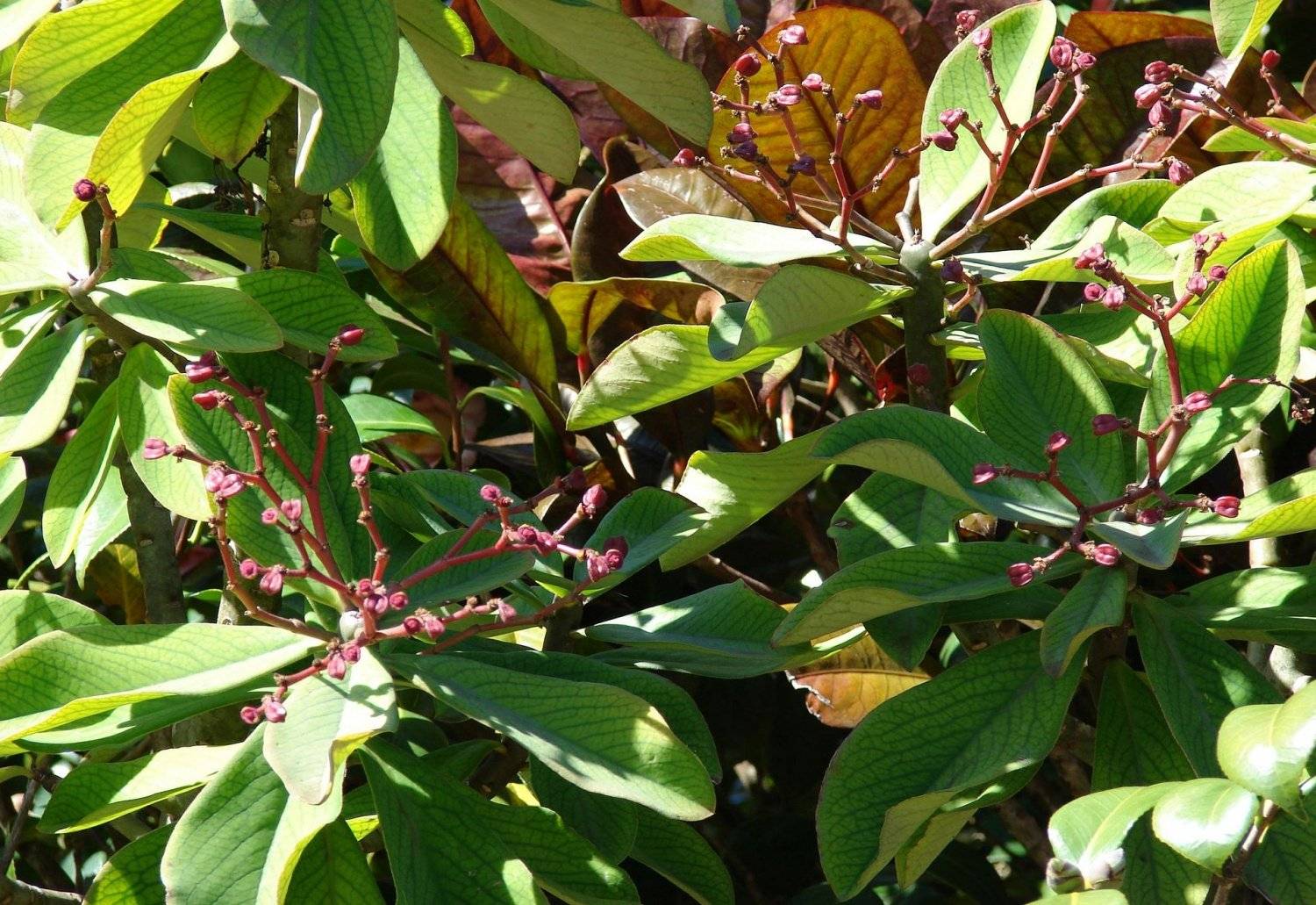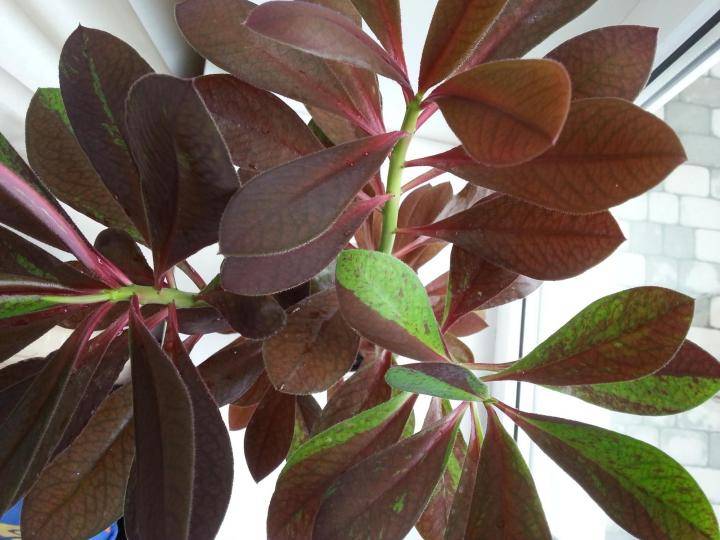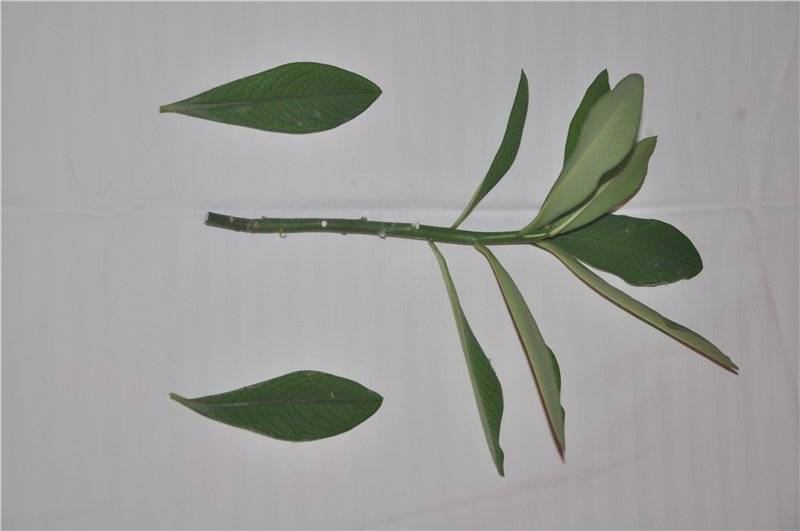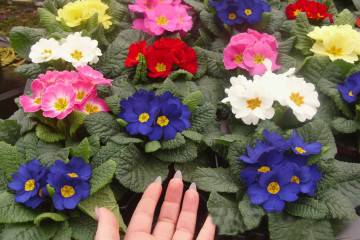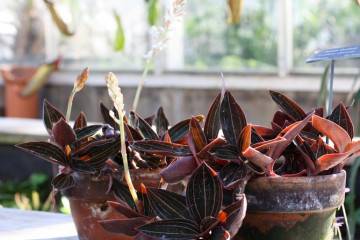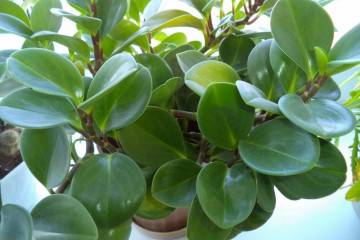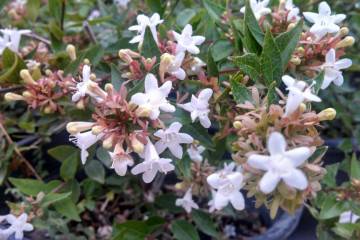Sinadenium Grant: home care and main varieties
Content:
Grant's synadenium is a plant that, when it appears in the house, will quickly get used to it and will begin to delight the eye with its beauty. It is unpretentious, unlike other indoor plants, and there are many types of it, each of which will add brightness to the room in which it will stand.
Plant varieties
Sinadenium is a flower that has more than 20 varieties, but only a few of them are considered indoor plants that take root at home. It is also called the euphorbia sinadenium, since when the stem is cut, the plant begins to secrete a milky liquid. You must be extremely careful with it, because it is poisonous.
Synadenium Grant
The plant can be up to 3 m in height, has oval-shaped leaves, which are attached with roots to the stem. The leaves of Grant's synadenium are very hard and shiny, the length of one leaf can reach 25 cm, and the width is 12 cm.
Synadenium Rubra
This plant has already been bred from Grant's synadenium. Sinadenium Rubra differs from its predecessor in that there are burgundy spots on its leaves, and their shape is uneven. The plant blooms at home in the middle of winter, it throws out long peduncles from the very top.
Home plant care
In general, looking after him is very simple. The only thing is that it is difficult to hold the plant due to its large size, so it must be regularly cut and pinched. The big advantage of a flower is that the owners can leave the house for a while, as it is able to retain moisture in itself for several days. But there are other features in the care of the synadenium.
Humidity
Sinadenium Grant tolerates dry air well, even when the heating device is running in the house. Of course, you can't put a flower close to the radiator, you need to try to keep it as far away as possible. If dust has accumulated on the leaves, they must be wiped with a small piece of damp cloth.
The soil
To plant a plant, you need good drainage, for this you need to put broken ceramic shards or expanded clay on the bottom. But the soil mixture will require a special one. It should include leaf and grain soil, peat, as well as sand of a large fraction. After all the components have been mixed, you need to add crushed charcoal, which will prevent the roots from rotting.
Temperature
From spring to autumn, the synadenium feels great. He loves warmth and lots of light. The temperature regime in winter is important. Indoors, the temperature should not drop below 10 ° C, otherwise the death of the flower is inevitable.
Also, do not put the plant in a draft and allow sudden changes in temperature, as this can provoke foliage to fall.
Watering
Watering should be moderate, it is forbidden to water often, as this will provoke rotting of the roots, but the soil should not be allowed to dry out, because the flower will begin to fade.
In the spring and autumn, watering should be carried out at least once every two weeks, and in the summer, not more often than once a week. You should be careful with the plant in the winter, because the coolness in the room and watering can destroy it. Therefore, this must be done as the earth dries up and water at room temperature.
Lighting
The plant loves a lot of light, but it is preferable to put it on a window either from the east side or from the west, since the morning and evening rays will not harm the flower.
If the plant is on the north side, then it needs additional light sources, because in case of insufficient illumination, problems with decorativeness and stem elongation may arise.
Pruning the synadenium
To add brightness to the room, it is worth buying a synadenium, which is very simple to care for at home and does not require extra costs. The only drawback is the rapid growth of the plant, so it will often need to be pruned.
In a young plant, it is necessary to pinch the top to stimulate the growth of lateral shoots, and in older flowers, shoots are cut off at the beginning of the growing season.
If the plant is already more than five years old, it is worth pruning almost at the very base, leaving somewhere 15 cm or with cutting off 2/3 of the length.
Plant transplant
The plant is transplanted depending on its age. If this is a young flower, then the procedure must be done once a year in the spring, if the plant is an adult, then as the roots grow.
This succulent in natural conditions is used to developing in poor soil, but at home it must be planted in fertile soil, which consists of river sand, peat, humus and sod land. All this is taken in equal proportions. Be sure to put expanded clay on the bottom, which will act as a drain.
As for the choice of a pot, it can be either plastic or clay, there is no significant difference. But as for watering, here you need to take into account that in a clay pot the plant needs to be watered more often, and less often in a plastic one.
If the grower prefers to restrain the growth of the flower, then it is necessary to prune its roots, change the substrate, and leave the pot the same size as it was. Otherwise, it is necessary to take a pot 2-3 cm larger in diameter when transplanting.
Reproduction of the synadenium
To propagate it at home, you need to root stem cuttings or plant seeds. This should be done only in the spring.
Stem cuttings
To begin with, it is worth cutting off the upper stalk with a length of about 12 cm and with the presence of 5 leaves. To stop the release of milky juice, the stalk must be placed in warm water for a while. After that, leave it to dry for 1-2 days. As soon as a whitish film is visible on the cut, it means that the plant is ready for planting.
The pot is filled with an earth mixture, as mentioned above, and the cutting deepens by 2-3 cm, then it is placed in a warm and bright place. If the flower has begun, young leaves will appear in 15-25 days.
Seeds
This breeding method is a little painstaking, but the result is many new sprouts. First you need to prepare a wet substrate (a mixture of peat and sand). Seeds are sown no deeper than 10 mm.
Next, you need to form a greenhouse: the upper part is covered with a film, and the pot is placed in a warm and bright place, where the air temperature is not lower than 18 ° C. The first shoots should appear after two weeks. When the seedling reaches 1 cm, then it can be dived into a separate vessel, and when it reaches 3 cm, it can already be planted in the soil for an adult plant.
Plant toxicity
Sinadenium, despite its outward beauty, is highly toxic. Its leaves and stems contain juice, which is dangerous to humans.
Also, the plant is of great benefit, since it is possible to prepare a tincture from it, which will help to cope with diseases of the stomach, bladder and headache.
Grant's synadenium is a very beautiful and fast-growing plant that can be easily propagated and created at home a whole greenhouse, but nevertheless, care must be taken when working with it, as it is poisonous and can be harmful to health.
